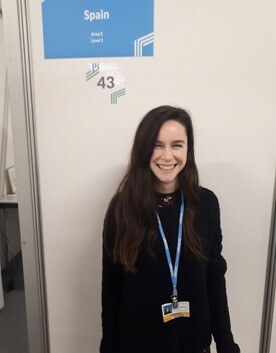COP26 IN GLASGOW
PROTESTS WITH MAJOR IMPACT

One of the most important prerequisites for successful protest actions is to be surrounded by really influential people. And there is no better place to do this than the United Nations Climate Change Conference.
By Carmen Huidrobro and Belén Hinojar
What is COP26?
In the previous article, Lola apprised us of the ways Belgian activists had found to adapt their forms of organisation to the pandemic and social distancing. And even though we cannot know for sure yet whether the situation will have improved enough to allow physical meetings, the United Nations Climate Change Conference (COP26) is scheduled to be held in the first half of November in Glasgow.Politicians, journalists, NGOs and activists from up to 200 countries will meet during these days to pursue a major goal, namely to accelerate climate protection through concrete government plans to reduce greenhouse gas emissions, as Spain, for example, has done with its new Climate Protection Act. The aim to limit global warming and meet the commitments undertaken at the Paris Agreement which countries signed more than five years ago.

An important stage for activists
According to Marta, spokesperson for Fridays For Future Spain, every COP affords a great opportunity because society pays attention to the climate emergency. Space is thereby opened up for activists to influence the institutions to great effect and without detours. Alberto and Marta, activists from Extinction Rebellion and Fridays For Future Madrid told us on our YouTube channel (Climabar), that "individual actions are important, but nothing is more effective than joining a collective."The biggest challenge is to initiate a climate debate that goes socially deeper than the official and institutional discourse. These protests are therefore ever so important, because they can get this message across in a sensational and direct way. Marta goes on to tell us that fewer financial resources make it difficult for activists to stand up to private actors at the conference and get their voices heard.
Activists who are part of a civil society organisation have access to COP26. The prepare for months, with their own group or with others, so that they can protest at the event. They debate, draw up their demands, choose their delegates and think about which representatives they want to address... during months of strategic preparation! These large-scale actions are really sensational. They make it possible to grab the limelight and send a strong message, e.g. that the emission reduction targets set in the Spanish Climate Protection Act are not enough.
But not all protests are based on long-term preparation. Sometimes a unique opportunity to attract the attention of a key figure arises quite spontaneously. Or a decision is made that the activists feel is so detrimental to the planet that they have to organise quickly in order to respond. You can see one of the biggest actions launched last year at COP25 in Madrid here:
Now that the World Environment Day is imminent, there will certainly be actions like this in your area that you can take part in (with the necessary safety measures, of course).
And what can you do even if you are not going to Glasgow?
There are many ways to support the activists on the ground. You can for instance share their actions on the social media and make them more visible, or simply follow their online campaigns for the conference and thereby participate indirectly... Get on board!In the next article, our friends Matilde and Diogo will talk about the activism debate taking place in Portugal. Once it became clear that conventional forms of protest were not achieving their goals, the movement is now turning to civil disobedience.
Did you like the article? Then share your opinion with us on the social media. We read you!